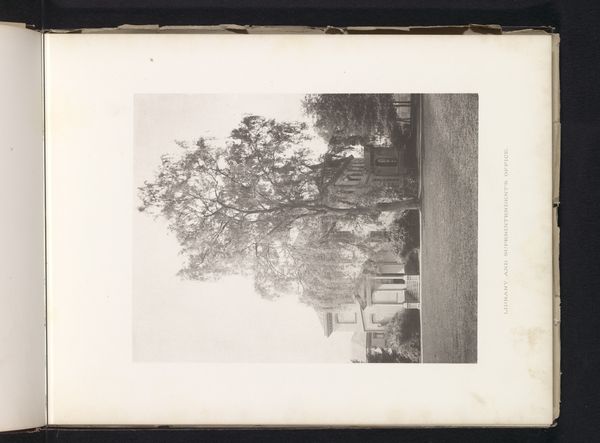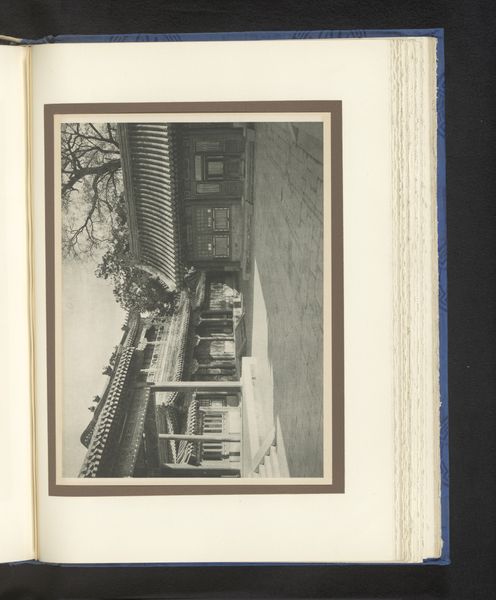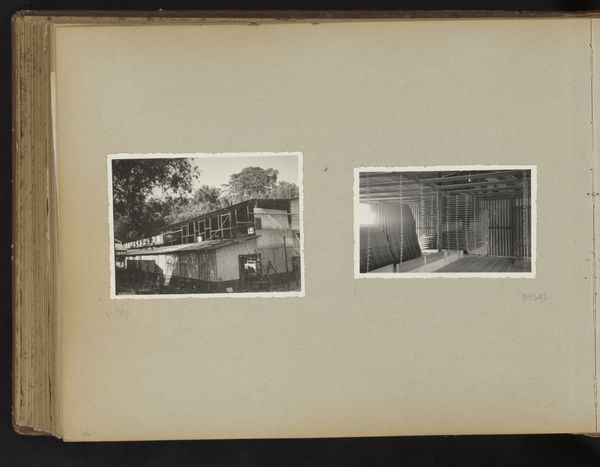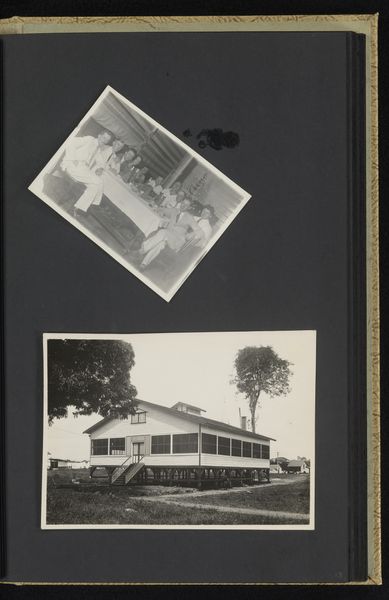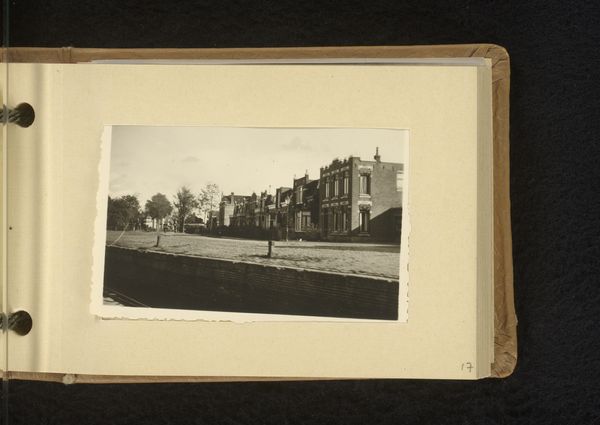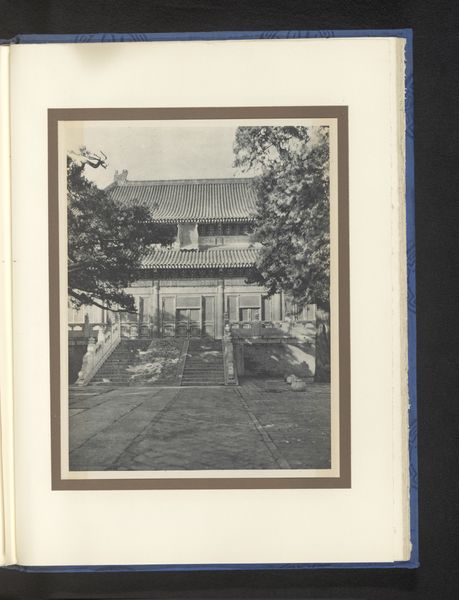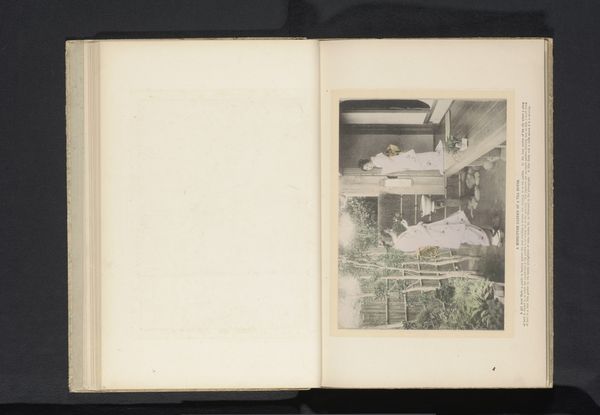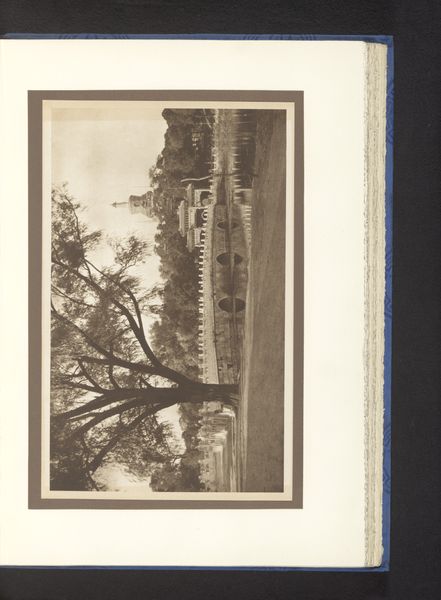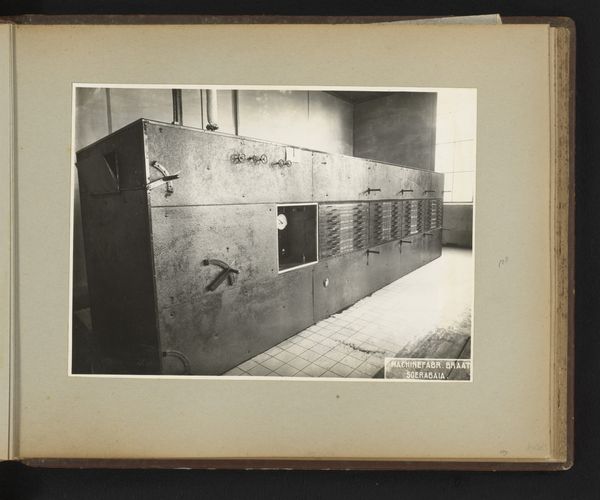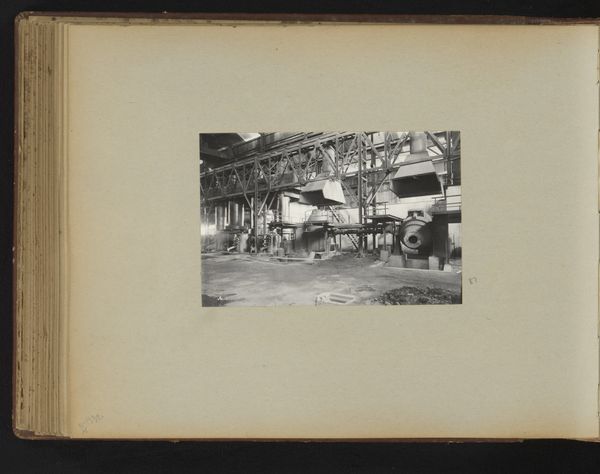
photography, gelatin-silver-print
#
photography
#
gelatin-silver-print
#
cityscape
#
modernism
#
realism
Dimensions: height 170 mm, width 233 mm, height 250 mm, width 320 mm
Copyright: Rijks Museum: Open Domain
Curator: Here we have an interesting gelatin silver print from 1935. It's titled "Kinaonderneming Daradjat" and it currently resides here at the Rijksmuseum. Editor: My first thought is one of stark contrasts. The modern industrial structure is plopped down on a rural landscape; it feels very unnatural. Curator: Well, the title refers to a quinine enterprise. You have a collision between agricultural production, represented in the rural imagery, and industrial progress shown in the factory itself. It signifies the Dutch colonial presence and exploitation of resources. Editor: Yes, I am immediately struck by the architectural contrast. Notice how the rough, thatched roofs of native buildings peek into the left frame and highlight how rudimentary building techniques stand alongside the more engineered structure. The composition seems arranged to point out two radically different symbolic languages for progress, or rather lack of it. Curator: Absolutely. The artist emphasizes the ordered structure with straight lines contrasting to the foliage growing uncontrolled right next door to the facility. It really emphasizes how modernism was used a tool of governance over land and labor. Editor: The industrial chimneys towering next to native thatched huts reminds of an imbalance of power; even the smoke seems a symbol of cultural dominance, polluting not just the air but an ancient way of life. There's a palpable sense of disruption embedded in this very deliberate visual language. Curator: By using gelatin silver print, the photographer gives us an intimate yet removed perspective of the social landscape in colonial Indonesia. The sharp details and the tonal range render the scene both realistic and documentary. Editor: Considering the piece in that way, it makes it incredibly poignant. It freezes a crucial point when ways of life and cultural practices collide violently. This makes the imagery a painful relic of both cultural dominance and human disruption. Curator: Yes, thinking about how images reflect the economics and impact of colonial administration encourages us to delve into the impact of this era. Editor: Absolutely. When viewing pieces like this, it reminds us of how we have always shaped the landscapes with our cultural understanding and ideologies, whether in construction or how we allow things to fall into ruin.
Comments
No comments
Be the first to comment and join the conversation on the ultimate creative platform.
